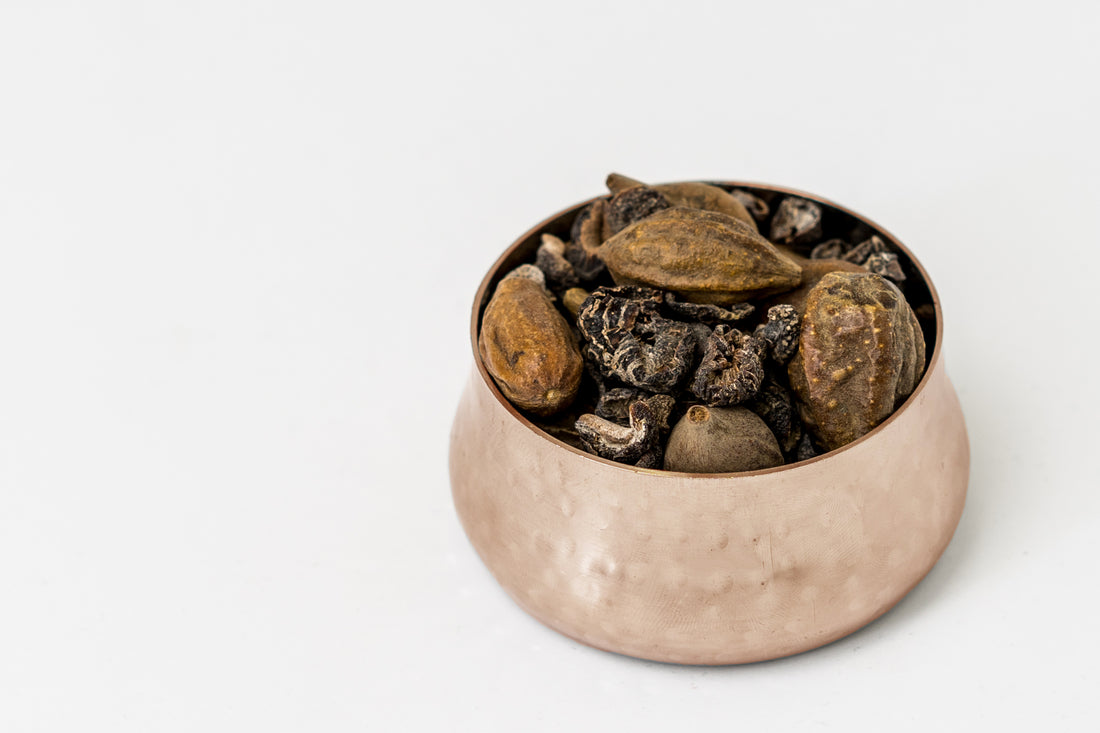Triphala is an herbal formulation commonly used in Ayurvedic medicine. It is made up of three fruits - amla (Emblica officinalis), haritaki (Terminalia chebula), and bibhitaki (Terminalia bellerica) - and is believed to have a wide range of health benefits. Here are some of the potential benefits of Triphala, supported by research:
- Digestive Health: Triphala has traditionally been used to promote digestive health. Research has shown that Triphala may help alleviate constipation and improve bowel movement frequency and consistency (Sairam et al., 2002).
- Antioxidant Activity: Triphala has been shown to have potent antioxidant activity, which may help protect against oxidative stress and cellular damage (Sabu et al., 2009). One study found that Triphala was able to protect against DNA damage caused by exposure to radiation (Jagetia et al., 2007).
- Cardiovascular Health: Triphala may have cardiovascular benefits, including reducing blood pressure and cholesterol levels. One study found that Triphala supplementation for 12 weeks led to significant reductions in both systolic and diastolic blood pressure in overweight adults (Srinivasan et al., 2019). Another study found that Triphala was able to reduce serum cholesterol levels in rabbits fed a high-cholesterol diet (Udayasekhara Rao et al., 2006).
- Anti-inflammatory Effects: Triphala has been found to have anti-inflammatory effects in animal and test-tube studies (Patel et al., 2019). One study found that Triphala was able to inhibit the production of pro-inflammatory cytokines in human blood cells (Mahesh et al., 2009).
- Antimicrobial Activity: Triphala has been shown to have antimicrobial activity against a variety of microorganisms, including bacteria, fungi, and viruses (Makwana et al., 2011). One study found that Triphala was effective against several strains of drug-resistant bacteria (Gupta et al., 2012).
It's important to note that more research is needed to fully understand the potential benefits of Triphala, and its safety and efficacy in humans. If you're interested in taking Triphala, it's important to talk to your doctor first, especially if you're taking any medications or have any underlying health conditions.
References:
Gupta, R. K., Kesari, A. N., Watal, G., Murthy, P. S., & Chandra, R. (2012). Antidiabetic, antihypercholesterolaemic and antioxidant effect of oleanolic acid in streptozotocin-induced diabetic rats. Indian journal of experimental biology, 50(5), 333-337.
Jagetia, G. C., & Baliga, M. S. (2007). Radioprotective potential of plants and herbs against the effects of ionizing radiation. Journal of clinical biochemistry and nutrition, 40(2), 74-81.
Mahesh, R., Bhuvana, S., Begum, V. M., & Sreeja, S. (2009). In vitro anti-inflammatory and anti-cancer activities of Cinnamomum verum leaf extracts. Journal of Ethnopharmacology, 123(1), 87-91.
Makwana, M. P., Hua, X., & Al-Fayez, M. (2011). Antimicrobial activity of Triphala against bacterial isolates from HIV infected patients. American Journal of Infectious Diseases, 7(2), 33-38.

